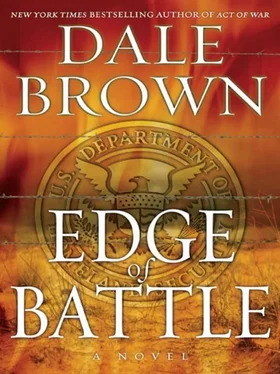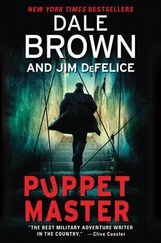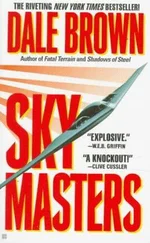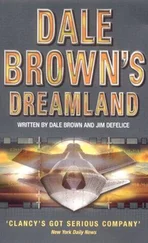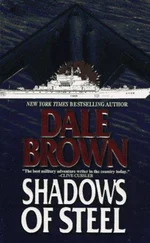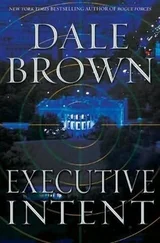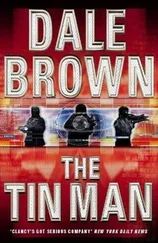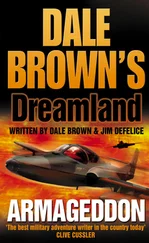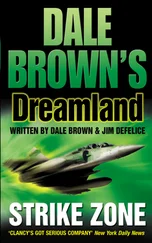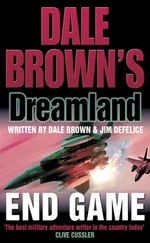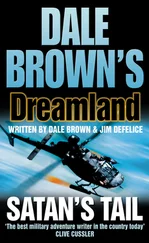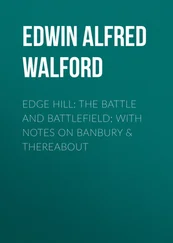“No worries, Bob. I found a company with armored limos. They’re comping the car for the week as long as they can put their signage in the back window and at the parking areas at your events. All your sponsors and venues said no problem.”
“An armored car, you say?”
“This company has a fleet of armored Suburbans that were rejected by a very wealthy real estate developer from Bahrain because they were too heavy—they wouldn’t fit on their jets,” the agent explained. “These things are like friggin’ tanks, Bob. It’s a good deal.”
“I like my regular service…”
“They don’t have armored limos, Bob, and besides they hesitated to help you after yesterday’s broadcast. Frankly, Bob, they ran like frightened chickens. Screw ’em.”
“But is this a good company…you know, are they trustworthy?”
“Don’t worry about a thing. I checked ’em out. They’re new, but I spoke with the owner and he seems okay. Young, a real go-getter, anxious to make a name for himself.” He read O’Rourke’s eyes and added, “And yes, he’s an Anglo, and all his drivers are Anglos. I said don’t worry. I have a bodyguard assigned to you, recommended by one of your sponsors, and I’ll be along every step of the way to keep an eye on things.” O’Rourke looked worried but said nothing as he reached for another beer.
More TV and media crews were outside the studios when Bob O’Rourke emerged about a half hour later after his staff meeting. The bodyguard took up a position on the other side of the car, facing the crowds being kept away by a greatly expanded police presence. O’Rourke made a few comments for the reporters, waved to the crowd with his left hand, raised his bandaged right hand defiantly to the delighted cheers of his supporters who easily drowned out the protesters on the other side of the street, and entered the massive armored Suburban limousine, making a pleased mental note of the inch-thick steel and Kevlar in the armored doors and three-inch-thick bulletproof glass.
His agent was already inside. “I told you, Bob—first class all the way,” he said, checking out the very high-tech electronics and devices inside. “This is probably what the President’s limo looks like.” He handed O’Rourke the remote to the twenty-four-inch plasma TV inside. “Here—you might be able to catch the news piece on yourself.”
O’Rourke took the remote and turned the TV on. “Get me another beer, will you?”
“Better take it easy, Bob—you have a full afternoon.”
“Just get me another beer and shut up, will you?”
The agent shook his head, silently determined that this would be the last one until dinnertime. He opened the ice cabinet section of the limo…and his mouth dropped open in absolute horror.
At the same time, the bodyguard had got into the front passenger seat, and the limo driver trotted around from holding O’Rourke’s door open to get in the driver’s side…but instead of getting in, he dashed off down the driveway, past the media crews, and disappeared into the crowds on the street.
“Get out! Get out!” the bodyguard’s muffled voice shouted through the closed blast-proof privacy window. “Get out of the car, now! ”
“What the hell…?” The agent’s eyes widened in surprise, then fear, then abject panic. “Holy shit, this thing’s full of…!”
O’Rourke tried the door handle. “The door’s locked!” He tried the other handle. “This one’s…”
At that instant, the one hundred pounds of C4 explosives planted in the liquor and ice cabinets inside the SUV exploded. The armored body and windows of the SUV contained the explosion for a fraction of a second until, like an overfilled balloon, the powerful explosives first blew the windows out, then ripped the rest of the vehicle into a thousand pieces. Huge tongues of fire leaped out horizontally through the limo’s shattered windows, and then the area for an entire block was showered with flying shards of metal, a wave of fire, and a tremendous concussion, knocking over every person, vehicle, and any other standing object within one hundred yards and shattering every window for another hundred yards.
CALIFORNIA STATE UNIVERSITY,
NORTHRIDGE, CALIFORNIA
A SHORT TIME LATER
The white panel truck exited northbound Highway 101 at Reseda Boulevard and headed north, not speeding but zipping through many stoplights that had just turned red. It turned right on Vincennes Street, past Darby Avenue and onto the California State University–Northridge campus. West University Drive dead-ended at Jacaranda Walk, but the truck squeezed through a narrow brick campus entryway and continued eastbound onto the wide tree-lined sidewalk down two blocks until reaching Jacaranda Hall Engineering Building, the driver beeping its horn occasionally to warn students.
The scene on and off campus was one of absolute confusion. There were several antimilitary, antiadministration, and anti-immigrant protest groups up and down West University Drive. The streets were littered with garbage, discarded signs and banners, and projectiles. The acidy smell of tear gas could barely be detected, wafting in from many directions. Long lines of Hispanic men, women, and children were walking down both sides of the street in both directions, with cars following them, honking horns at them, or simply unable to move because of the chaos. Media crews were everywhere, adding to the confusion.
Cal State–Northridge’s campus security was already out in force trying to keep most of the protesters and displaced Mexicans from swarming onto the campus, but they focused their attention squarely on the white panel truck as it drove up over the curb and onto the sidewalk on campus. The situation stopped being serious and had suddenly gotten potentially deadly.
The truck took a left onto East University Drive, then an immediate left into the handicapped parking area outside Jacaranda Hall. Just as campus security patrols arrived, they saw the driver get out of the truck’s cab and step inside the back of the truck. Three patrol cars, lights flashing, blocked the truck. “Driver of the white panel truck,” one of the officers said, using the loudspeaker on his patrol car, “this is the campus police. Come out of the vehicle immediately.” There was no response from the vehicle, even after several repeated calls both in English and Spanish.
After the duty sergeant arrived and assessed the situation with his officers, it was quickly decided to evacuate Jacaranda, Sequoia, Sagebrush, and Redwood Halls and Oviatt Library, and call in the Highway Patrol and the Los Angeles County Sheriff’s Department. The recent bombings in Las Vegas and Mexico City, plus the considerable unrest among the Hispanic population all across California, put everyone on hair-trigger alert.
Within ten minutes the sheriff’s department’s bomb squad arrived, and ten minutes after that a remote-controlled tracked robot was dispatched, carrying a bag with a cellular phone inside, plus microphones that could be attached to the outside of the truck with remote manipulator arms to listen to what was happening inside. By that time the buildings surrounding the truck had been evacuated and a one-hundred-yard perimeter established. The robot motored to the closed and locked double cargo doors in the back of the truck, just far enough away for one door to be opened.
A loudspeaker on the bomb squad’s robot crackled to life: “Attention, any persons inside the truck. This is Sergeant Louis Cortez of the Los Angeles County Sheriff’s Department. We would like to speak with whoever is inside. We will not harm you. A remote-controlled unarmed robot is behind the truck. It is carrying a bag containing a telephone. You may open the right-side cargo door, reach out, and take the bag containing the phone. We assure you, we will not trick you. The bag contains only a phone, and we will not attempt to arrest or attack you. We wish to speak with whoever is in charge. Please take the phone.”
Читать дальше
